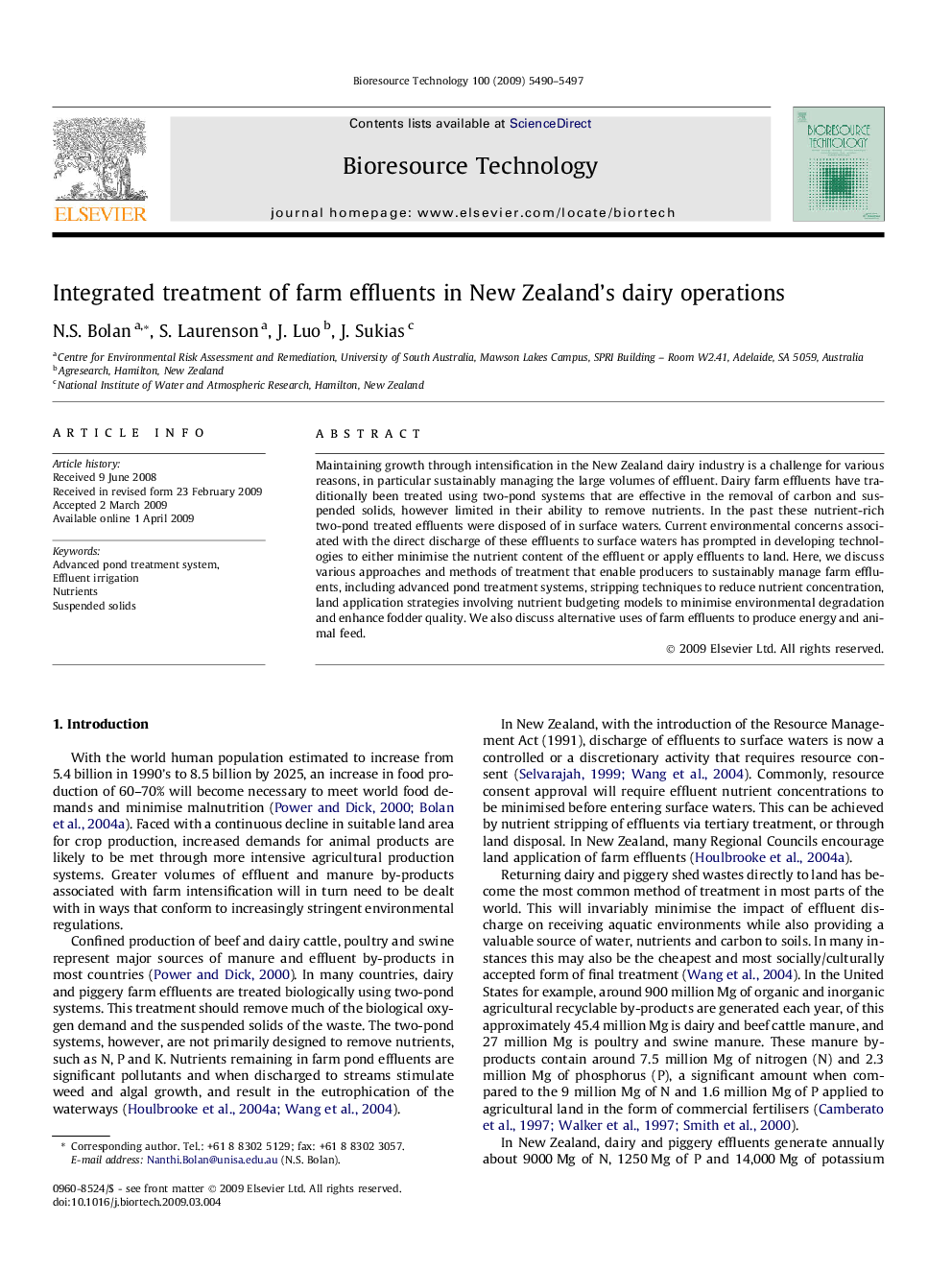| Article ID | Journal | Published Year | Pages | File Type |
|---|---|---|---|---|
| 683998 | Bioresource Technology | 2009 | 8 Pages |
Maintaining growth through intensification in the New Zealand dairy industry is a challenge for various reasons, in particular sustainably managing the large volumes of effluent. Dairy farm effluents have traditionally been treated using two-pond systems that are effective in the removal of carbon and suspended solids, however limited in their ability to remove nutrients. In the past these nutrient-rich two-pond treated effluents were disposed of in surface waters. Current environmental concerns associated with the direct discharge of these effluents to surface waters has prompted in developing technologies to either minimise the nutrient content of the effluent or apply effluents to land. Here, we discuss various approaches and methods of treatment that enable producers to sustainably manage farm effluents, including advanced pond treatment systems, stripping techniques to reduce nutrient concentration, land application strategies involving nutrient budgeting models to minimise environmental degradation and enhance fodder quality. We also discuss alternative uses of farm effluents to produce energy and animal feed.
